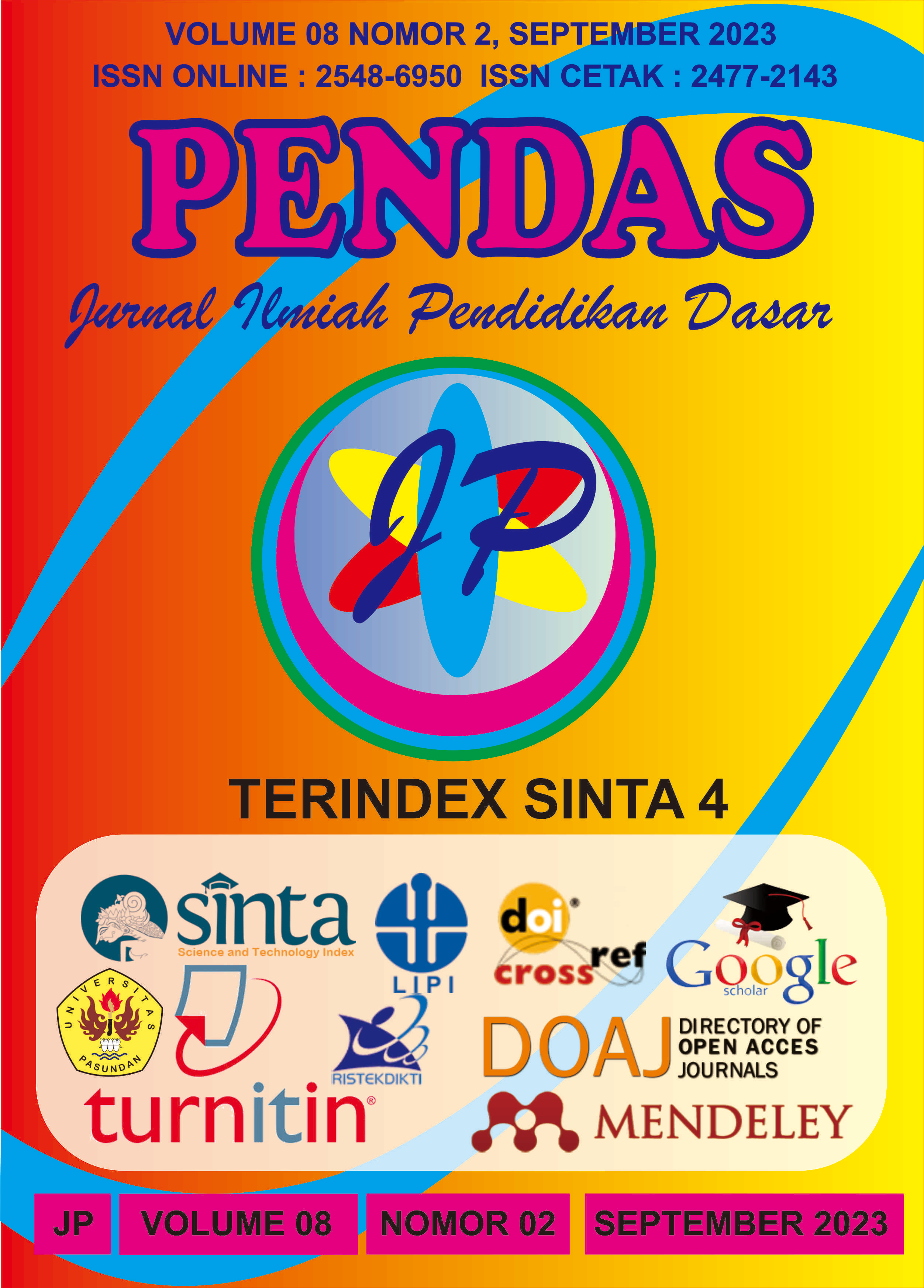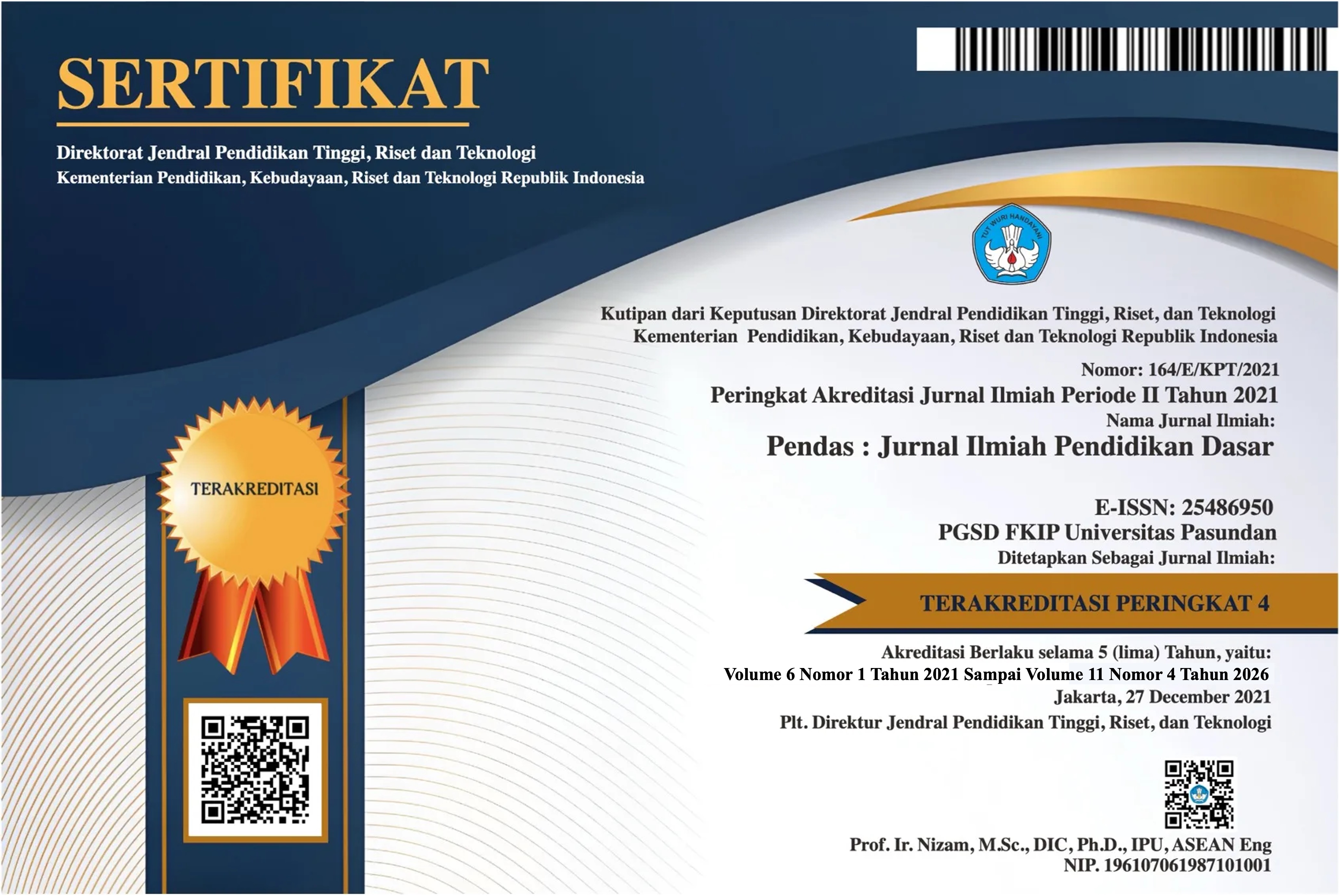PRAKTIKALITAS MODUL PEMBELAJARAN MATEMATIKA FLIP FRACTIONS UNTUK SISWA KELAS IV SEKOLAH DASAR
DOI:
https://doi.org/10.23969/jp.v8i2.9447Keywords:
Learning Module, Fractional Mathematics, Flip FractionsAbstract
The limitations of the teaching materials provided by the teacher to students in learning mathematics lead to a lack of student interest in learning and cause students to have difficulty understanding mathematics material because the material contained in the teaching materials is presented in a concise manner and cannot be used outside the school environment. There needs to be teaching materials for learning mathematics that can be used by students outside the school environment and contain complete material. This study aims to find out that the Flip Fractions mathematics learning module for grade IV elementary schools meets the practicality criteria. Practicality criteria are carried out by teacher and student responses through questionnaires. This research uses the Design & Development method with the ADDIE development model which consists of five stages, namely analyze, design, development, implementation, and evaluation, but this article will discuss the implementation stage because it only aims to find out the practicality of the Flip Fraction learning module. The research was conducted at SDN 4 Mekarjaya. The practicality results obtained from teacher and student responses were in the practical category with details of the teacher's response being 96,67% "Very Practical", student responses in small group trials 86,9% "Very Practical", and student responses in large group trials namely 91,77% "Very Practical". Thus it can be concluded that the Flip Fractions mathematics learning module for grade IV elementary school is categorized as very practical so it is suitable for use by grade IV elementary school students.Downloads
References
Branch, R M. (2009). Instructional Design: The ADDIE Approach. New York: University of Georgia.
Creswell, J. W. (2014). Reseach Design: Pendekatan, Kualitatif, Kuantitatif, dan Mixed. Yogyakarta: Pustaka pelajar.
Daryanto. (2013). Menyusun Modul:Bahan Ajar untuk Persiapan Guru dalam Mengajar.
E.Kosasih. (2020). Pengembangan Bahan Ajar. Jakarta: Bumi Aksara.
Erna, Y. (2019). Pembelajaran Matematika SD. Malang: Universitas Muhammadiyah Malang.
Ginting, D. Fahmi. Fitri. D. I. Mulyani, Y.S. Ismiyani, N. Sabudu. D. (2021). Literasi Digital dalam Dunia Pendidikan di Abad ke-21. Malang: Media Nusa Kraetif.
Hidayati, N., Setyosari, P. & Seopryanto, Y. (2018). Kompetensi Technological Pedagogical And Content Knowledge (TPACK) Guru Sosohum Setingkat SMA. Jurnal Teknologi Pendidikan. 1(4). 291-298.
Kementerian Pendidikan Dan Kebudayaan RI. 2017. Panduan Praktis Penyusunan E-Modul Pembelajaran. Direktorat Pembinaan SMA, Ditjen Pendidikan Dasar dan Menengah. Jakarta.
Ainurrohmah, N., & Mariana, N. (2018). Refleksi Kritis Terhadap Pandangan Matematika Dari Perspektif Siswa dan Pendidik Sekolah Dasar. Jpgsd, 6(10), 1706–1717. https://ejournal.unesa.ac.id/index.php/jurnal-penelitian-pgsd/article/view/24543
Nissa, I. C., Mandalikaasi, U. P., Skills, H. T., & Sekolah, G. (2022). PENGEMBANGAN MODUL AJAR KURIKULUM MERDEKA PADA GURU SD PROGRAM PPG. 2(4), 341–349.
Pratiwi, D., Santi, D., Liliana, I., Dewi, K., & Praja, E. S. (2022). PELATIHAN PEMBUATAN KOMIK BERBASIS LITERASI NUMERASI PADA MATERI PECAHAN BAGI GURU : USAHA MENINGKATKAN KUALITAS PEMBELAJARAN DI SD KECAMATAN SUMBER. 1–8.
Rohimah, S. M., Darta, D., & Anggraeni, R. I. (2022). Analisis Learning Obstacles pada Materi Pecahan Siswa Kelas IV Sekolah Dasar. Symmetry: Pasundan Journal of Research in Mathematics Learning and Education, 7(2), 171–180. https://doi.org/10.23969/symmetry.v7i2.6386
Soheb, M., Seftia, I., Widiyanti, R., Studi, P., Guru, P., Dasar, S., Studi, P., & Biologi, P. (2022). Berbasis literasi numerasi pada materi pecahan kelas iii sekolah dasar. 7(1), 373–380.
Purwanto. (2020). Evaluasi Hasil Belajar. Yogyakarta: Pustaka Belajar.
Richey, R. C. & Klein, J. D. (2014). Handbook of research on educational communications and technology: Fourth edition. Handbook of Research on Educational Communications and Technology: Fourth Edition, 1– 1005. https://doi.org/10.1007/978- 1-4614-3185-5.
SK Kepala Badan Standar, Kurikulu, dan Asesmen Pendidikan Kementerian Pendidikan, Kebudayaan, Riset, dan Teknologi No 008/H/KR/2022 tentang Capaian Pembelajaran Pada PAUD, Jenjang Pendidikan Dasar, dan Jenjang Pendidikan Menengah Pada Kurikulum Merdeka. Jakarta.
Sugiyono. (2021). Metode Penelitian Pendidikan Pendekatan Kuantitatif, Kualitatif, dan R&D. Bandung: Alfabeta.
Susanto, Ahmad. 2014. Teori Belajar dan Pembelajaran di Sekolah Dasar. Jakarta: Kencana Prenadamedia Group.
Downloads
Published
Issue
Section
License
Copyright (c) 2023 Pendas : Jurnal Ilmiah Pendidikan Dasar

This work is licensed under a Creative Commons Attribution 4.0 International License.



















